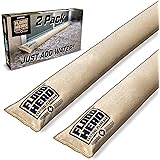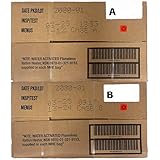Table of Contents
- Economic Considerations for Emergency Supplies
- Weather Patterns and Emergency Preparedness
- Best Practices for Stocking Up Safely
- Seasonal Sales and Discounts
Economic Considerations for Emergency Supplies
Understanding Market Trends
Understanding market trends can help ensure you’re not spending more money than necessary on emergency supplies. Prices can fluctuate based on demand and availability. Global events can affect supply chains, leading to increased costs. By keeping an eye on the news, you can make informed purchasing decisions.
For instance, during natural disasters or pandemics, the demand for certain items like sanitizers and non-perishable goods skyrockets. This means their prices may increase, and their availability might be limited. Buying supplies during these times can be costly.
Conversely, during times of economic stability, prices tend to be lower, and supplies are more readily available. Following economic indicators and consumer trends can give you a head start in gathering supplies without breaking the bank.
Budget Planning
Budgeting for emergency supplies is crucial. Begin by making a list of essential items you’ll need, such as food, water, medicine, and other necessities. Allocate a certain amount of your budget each month towards these supplies.
I typically break down my shopping list based on priority. High-priority items include water and medications, followed by food and safety equipment. This approach ensures that even if I have a limited budget one month, I still make progress in my emergency preparedness.
Additionally, consider buying in bulk. Bulk purchases often come with discounts, saving you money in the long run. Just remember to check expiration dates so you don’t end up with unusable supplies.
Saving for Emergencies
Creating a separate savings account for emergencies can be beneficial. This account should be dedicated solely to emergency funds and supplies, ensuring you have the financial resources when you need them most.
Set up an automatic transfer from your main account to your emergency fund each month. Even small amounts can add up over time, providing you with a significant reserve. This financial cushion can alleviate stress when unexpected situations arise.
== > What if ... Get a FREE Subscription to PREPARE
Regularly review your budget and savings goals. Adjust them as needed based on changes in your financial situation or anticipated emergency needs. Staying proactive will ensure you’re prepared without causing financial strain.
Weather Patterns and Emergency Preparedness
Identifying High-Risk Seasons
Weather patterns play a significant role in determining the best time to stock up on emergency supplies. Depending on where you live, certain seasons may pose higher risks than others. For example, hurricane season in coastal areas or wildfire season in dry regions.
Identifying these high-risk seasons allows you to prepare in advance. By stocking up before the season starts, you can avoid the last-minute rush that often leads to empty shelves and inflated prices.
Keep a close eye on weather forecasts and advisories from local authorities. Their warnings can give you a heads-up on imminent weather conditions, allowing you to take timely action.
Building a Seasonal Preparedness Plan
Developing a seasonal preparedness plan is essential for staying organized and equipped. Start by listing the specific weather-related emergencies that you might face and the supplies needed for each scenario.
For example, during winter, consider items like blankets, heaters, and snow removal tools. In contrast, summer may require air conditioners, fans, and extra water. Tailoring your supplies to the season ensures you have what you need when you need it.
Storing these supplies in an easily accessible location is vital. Your preparedness plan should include where each item is stored and a rotation schedule to check and replace supplies as needed, ensuring nothing goes to waste.
Adapting to Climate Changes
Climate change has made weather patterns more unpredictable, underscoring the importance of adaptability in your preparedness strategy. Stay informed about long-term climate trends that could affect your region.
For instance, areas that historically had mild weather might now face severe storms or extreme temperatures. Being flexible and ready to adjust your emergency supplies list based on these changes is crucial for comprehensive preparedness.
Networking with your community can also be beneficial. Sharing information and resources can help everyone be better prepared for unexpected climate events. Consider joining local preparedness groups or forums to stay in the loop.
Best Practices for Stocking Up Safely
Proper Storage Techniques
Storing emergency supplies properly extends their shelf life and ensures they’re ready when you need them. Start by choosing a cool, dry, and dark place for storage, as these conditions help prevent spoilage.
I like to organize my supplies using labeled bins or shelves. Labeling helps me quickly locate items, saving valuable time during an emergency. Keep an inventory list updated with expiration dates, so you know what needs to be used or replaced.
Avoid storing items directly on the ground. Elevate them on pallets or shelves to protect against flooding or pests. And always make sure to check the integrity of packaging regularly, replacing anything that appears compromised.
Rotation and Maintenance
Rotating your supplies is crucial for ensuring freshness and usability. Implement a “first in, first out” system—using items that are closest to their expiration date and replacing them with newer stock.
I set a reminder every few months to go through my emergency supplies. This routine check helps me stay on top of my inventory and ensures I don’t forget anything. It’s also an opportunity to verify that all items are in good condition.
Maintenance also extends to equipment checks. Test items like flashlights and batteries regularly. Having a well-maintained, up-to-date stash guarantees you won’t face any nasty surprises during an emergency.
Health and Safety Considerations
Health and safety should be a top priority when preparing emergency supplies. Make a list of essential medications and medical supplies, such as first aid kits, prescription drugs, and over-the-counter remedies.
Consult with your healthcare provider to ensure you have adequate supplies of necessary medications, especially if you have chronic health conditions. Having a stockpile can be lifesaving during emergencies when pharmacy access might be limited.
Additionally, consider the specific needs of family members, including pets. Have a contingency plan for medical emergencies and include contact information for healthcare providers and nearby emergency services.
Seasonal Sales and Discounts
Timing Your Purchases
Seasonal sales can be a great opportunity to stock up on emergency supplies without breaking the bank. Retailers often offer discounts during certain times of the year, such as back-to-school, Black Friday, or end-of-season sales.
I always keep an eye on major sales events and make a list of items I need beforehand. This way, I can prioritize my purchases and take advantage of the best deals without getting overwhelmed by the sheer number of available discounts.
Subscribing to newsletters from your favorite stores can also be beneficial. They often send notifications about upcoming sales and exclusive deals, ensuring you’re always in the loop.
Using Coupons and Promotions
Coupons and promotions are another excellent way to save money. Many stores offer digital coupons on their websites or apps. I love using these tools to find additional savings on top of already discounted items.
Don’t forget to check for manufacturer coupons as well. Combining store discounts with manufacturer’s coupons can significantly reduce the cost of your emergency supplies.
Loyalty programs are also worth considering. They often provide points or rewards for every purchase, which can be redeemed for discounts on future buys. Signing up for these programs can lead to substantial savings over time.
Monitoring Expiration Dates During Sales
When buying items during sales, always be vigilant about checking expiration dates. Ensure that the products you purchase will last long enough to be useful when you need them. Buying in bulk during sales is great, but it’s only beneficial if the items stay usable for a considerable period.
I have a habit of noting down the expiration dates of all items I buy during sales. This helps me keep track and ensures that nothing goes to waste. An ounce of prevention is worth a pound of cure, as they say.
Additionally, some stores might sell older stock during sales, which could have shorter shelf lives. Verify the dates and make sure you’re getting the value you’re looking for. Better safe than sorry!
FAQ
1. What are the most important items to stock up on?
Water, non-perishable food, medications, and first aid supplies are among the most crucial items. Don’t forget safety equipment like flashlights and batteries.
2. How often should I check my emergency supplies?
It’s a good idea to review your supplies every few months. This ensures everything is in good condition and still within its expiration date.
3. Can I rely on seasonal sales for all my emergency supplies?
While seasonal sales are excellent for saving money, it’s better to stagger your purchases throughout the year to avoid shortages and ensure you always have what you need.
4. What should I consider for pets during an emergency?
Make sure to stock food, water, medications, and comfort items for your pets. Also, have a plan for their care and transportation in case you need to evacuate.
Related Content
Flood Hero Water Activated Sandbags - 3 ft, 6 ft, 10 ft, 18 ft - Flood Bag Barriers for Home, Doors, Garages, Basements & More
$21.62 (as of December 25, 2025 18:19 GMT -05:00 - More infoProduct prices and availability are accurate as of the date/time indicated and are subject to change. Any price and availability information displayed on [relevant Amazon Site(s), as applicable] at the time of purchase will apply to the purchase of this product.)Stealth Angel Survival - 72 Hour Family Emergency Kit - 1-5 Person Survival Bag for Earthquakes, Hurricanes, and Other Natural Disasters
Now retrieving the price.
(as of December 25, 2025 18:19 GMT -05:00 - More infoProduct prices and availability are accurate as of the date/time indicated and are subject to change. Any price and availability information displayed on [relevant Amazon Site(s), as applicable] at the time of purchase will apply to the purchase of this product.)





